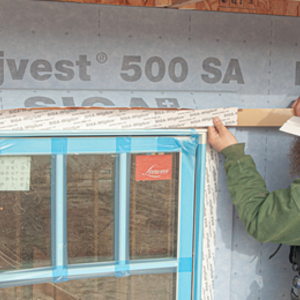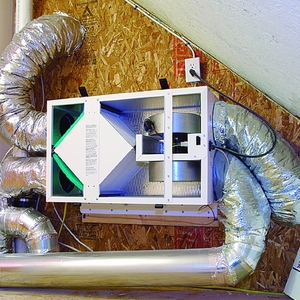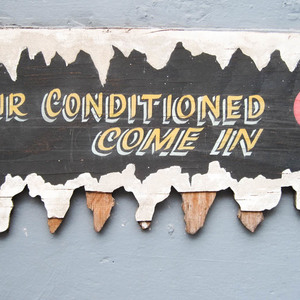
With the results of a newly minted Manual J calculation or its equivalent in hand, a homeowner should have a good idea of how much energy it will take to stay comfortable on the coldest days of the year. As energy steadily seeps out of the house, the heater is pumping new energy in, balancing heat loss with heat gain. Yet by themselves the heat loss numbers that you or someone else has jotted down—so many British thermal units (Btu) needed per hour—do very little to guide you in choosing exactly what kind of heating equipment you should buy.
Any number of devices will do: a natural gas furnace, a boiler that runs on fuel oil, a heat pump, a direct-vent propane heater, or a wood or pellet stove. There is no one ideal option that will work for everyone in every situation. Advocates for particular heating systems are everywhere and always willing to give you an earful. Where to start?
It might help to break the decision down into manageable chunks: How much will it cost to buy the equipment initially? How much will it cost to operate it over time? Who will maintain the equipment, and repair if when it inevitably needs service? How will the equipment mesh with future decisions around the house, such as the addition of a renewable energy source or a building renovation? Will the floor plan of the house have a bearing on the heating system?
One of the earliest and biggest barriers to cross is whether you should rule out a combustion appliance. Let’s call it the Carbon Rubicon. As scientists give us a greater appreciation for the impact of carbon emissions on the climate and the environment, a growing number of activists are pressing for stricter controls on the…
Weekly Newsletter
Get building science and energy efficiency advice, plus special offers, in your inbox.

This article is only available to GBA Prime Members
Sign up for a free trial and get instant access to this article as well as GBA’s complete library of premium articles and construction details.
Start Free TrialAlready a member? Log in















6 Comments
Nice survey of the most popular alternative systems, although personally I think radiant (not just resistance) electric heating deserves mention. More comfortable (like enjoying direct sunlight on a cool day, or the radiant heat from a wood stove in a cold room). Some say a lower thermostat settings may be required with radiant heat, since heat is felt directly through radiation, not just through hot air convection.
You also didn't mention passive solar or solar-tempered heating. Heat gain from windows can be significant enough to provide the vast majority of wintertime heating required, but only in sunny, cold winter climates, and for building sites that enable wintertime solar access. Most places don't consider creating building sites to provide good solar access, because its rarely mentioned anywhere in our fossil-fuel-centric world view.
The main limitation of this article for me is that there's an important tradeoff with insulation and air-sealing that isn't really mentioned. The Passivhaus movement justifies the high cost of very high performance windows and very high insulation levels by noting that the cost of a central heating system is deleted to compensate (at least somewhat). Not to mention the lower utility bills, and resilience to loss of fuel or protection from fuel cost increases, that Passivhaus/PHIUS provides.
There are less extreme levels of increased insulation and better windows that can be affordable (actually save money in the long run), often called The Pretty Good House, or passive solar or solar-tempered homes, or other alternatives, that eliminate central heating, and its associated maintenance, replacement and fuel costs.
And yeah, like you discuss upfront, lets not forget we are destroying our planet and many other species by pretending that fossil fuels are a realistic alternative in new homes. Unless you are located in North Dakota, Alaska or similar extremely cold climates with dirt cheap natural gas available...I'd boldly claim that it ALWAYS pays to increase insulation levels and air-sealing, with better windows and attention to solar gains, to the point that you can't justify the cost of a central heating system, and all its attendant costs and problems. Just like coal, fossil fuel central heating in single family homes lives on, only by tradition, not by any sensible engineering or humanistic reason.
Shame on me for not writing an article on this topic.
Hi Robert.
Thanks for your thoughtful reply. And if you want to write an article that dives deeper into these topics, email me [email protected].
What type of radiant electric are you referring to?
“[Deleted]”
If you run a combustion analysis on most high efficiency furnaces and boilers, you find that they tend to burn a 2-5% below their rated Efficiency. To get the extra efficiency the equipment needs the air/water returning to it to be as cool as possible in order to force the flue gasses to condense.
With a boiler this is easy Because you can usually slow down your pump to allow the radiators to dissipate more heat and/or program a set point that varies with outside temperature, enabling You to operate at cooler temperatures in the warmer portions of the heating season.
Some boilers I’ve installed operate consistently at 99% combustion efficiency, because we let the loop shed its heat for a longer time before it gets back to the boiler.
One last thought, modulating furnaces tend to operate at lower combustion efficiency at low firing rates.
Personally, I’m working through long term series of energy upgrades on my Own house. I’m hoping that by the time I’m finished the air-to-water heat pump for space heating will have made its way to the US. They’re in Canada.
A lot of the disadvantages of air source heat pumps are ameliorated be heating up water rather than air.
Buffer tanks would allow heat to be stored into the night reducing the need for heat pumps to run at lower nighttime temperatures as well as enabling the system to continue heating while the outdoor unit defrosts.
Paul, you make a good point about the return temperature for condensing boilers, which is a consideration I still don't think many are accounting for. And I would even suggest that the drop in efficiency is even greater, especially as we see these systems installed in "pretty good" homes.
The foundation of design for any system should always be anchored back to an accurate manual J load calculation as well as manual D for distribution design. In "pretty good" homes, the whole house load and the room by room loads are often small enough that the delivered temperatures from a standard fin-tube baseboard or traditional radiant floor system are often too much for the rooms, and will lead to overheating and poor performance of the boiler. The old school approach of just picking a favorite mod-con because it will just modulate down its output, just is not good enough. Water carries an infinitely higher amount of btu's per volume than air and offers much more flexibility in managing room by room loads vs forced air (IMHO) especially now with all of the distribution and zoning/valve/pump options available.
The use of a buffer tank as a "battery" for storing needed distribution heat and designing the distribution to utilize the lowest distribution temperature possible for the distribution type is the long term future-proofed solution for most homes I would dare to say, as it allows for flexibility for what heat source will be used now or in the future. It certainly would allow a mod-con to work closer to what it was designed to do, and opens up the option for using air-to-water heat pumps or pellet systems. And whatever else Elon Musk may be conjuring to serve these purposes as he continues to take over the world. I would suggest to anyone interested in learning more about right-sizing best practice for hydronics design look up John Sigenthaler. The man knows his stuff.
Here in VT where I am we seeing and working on homes being designed around using air-to-water heat pumps right now, so they certainly are available and viable here in the US now. Spacepak and Chiltrex are two US-based manufacturers, while Nordic, Arctic, and Aermec are brought us by our Canadian friends. AND, you can do heating and cooling with this equipment; because of the buffer tank. These A2W systems are being installed in "pretty good" and "a bit better than code" homes, not just PHIUS certified houses.
Smart distribution and right-sized systems really opens up the door to exciting opportunities for simple efficient heating and cooling systems that as a result of being simple and efficient will also be long-lasting in the lifetime of the equipment and consistent performance. Electric resistance systems from the 70's here are still working pretty much as they did from the day were installed. Now we just have much more efficient electric system options that meld perfectly with expanded access to renewable power generation sources.
Good article!
http://spacepak.com/hydronic-heating-and-cooling
https://www.chiltrix.com/air-to-water/
Log in or become a member to post a comment.
Sign up Log in